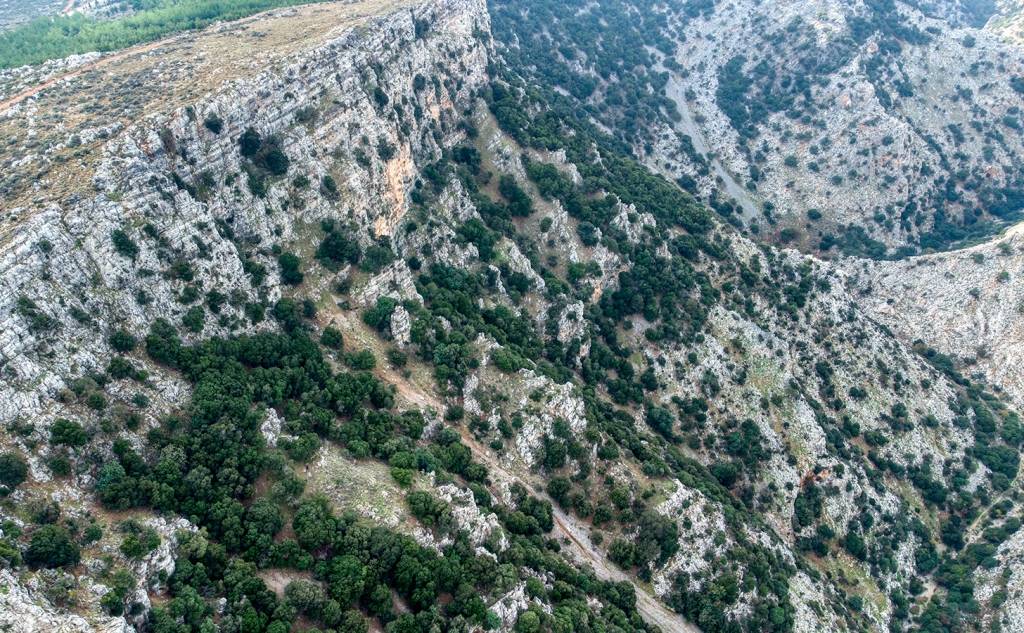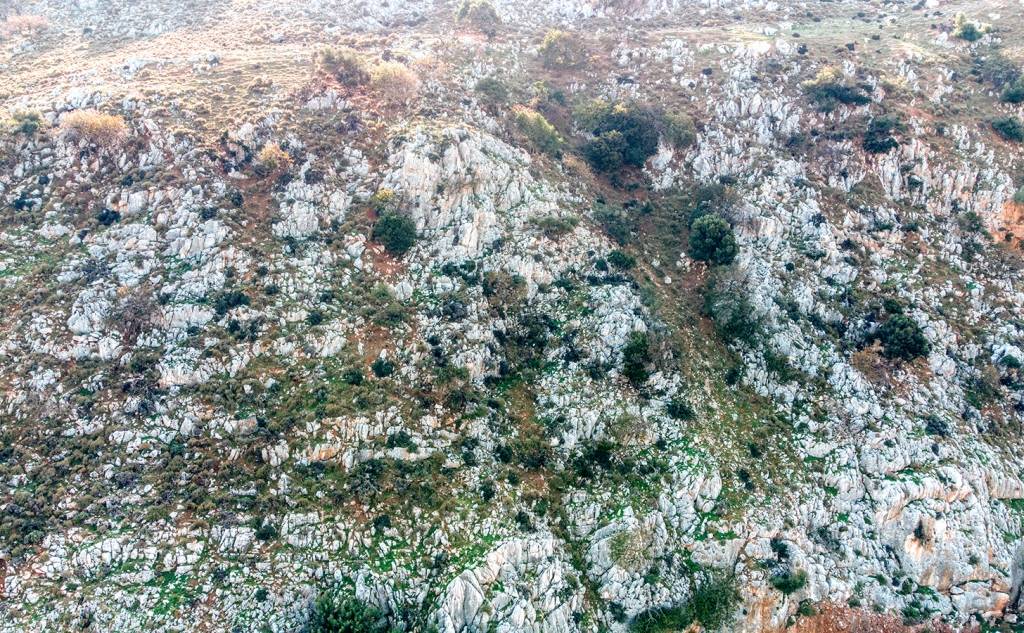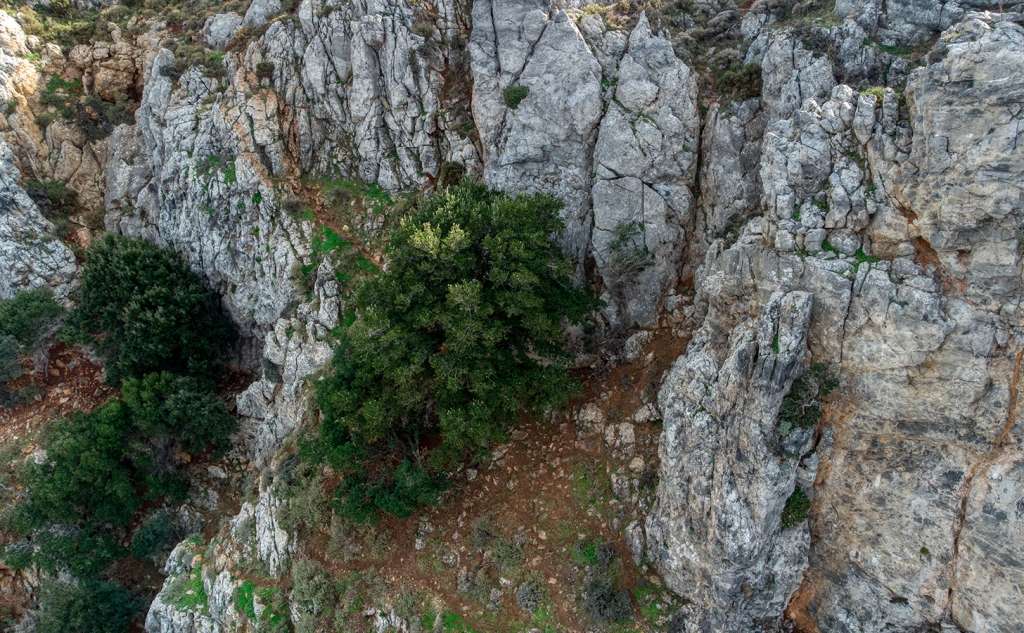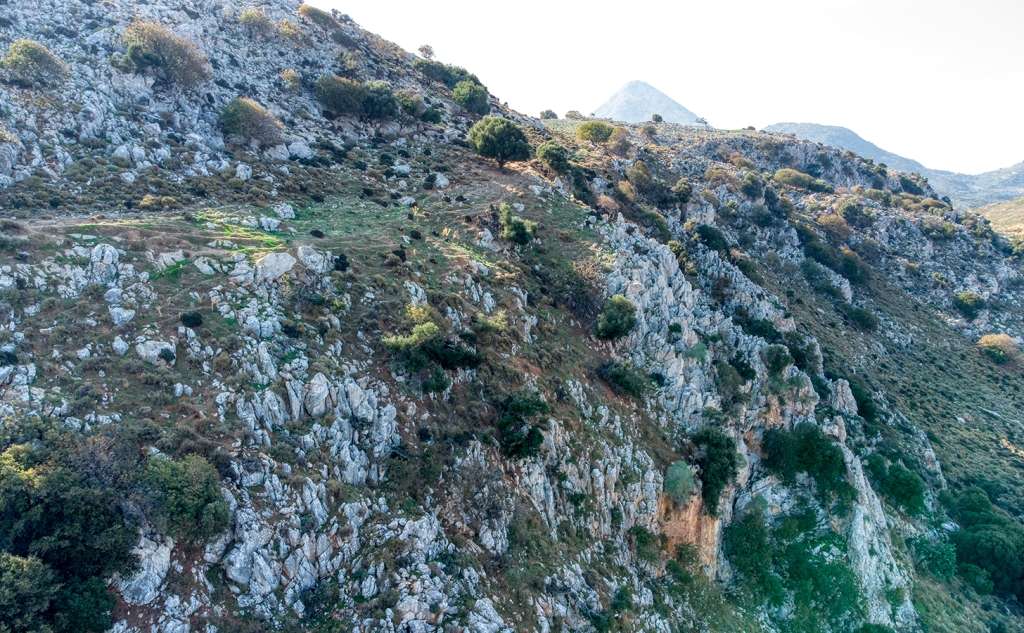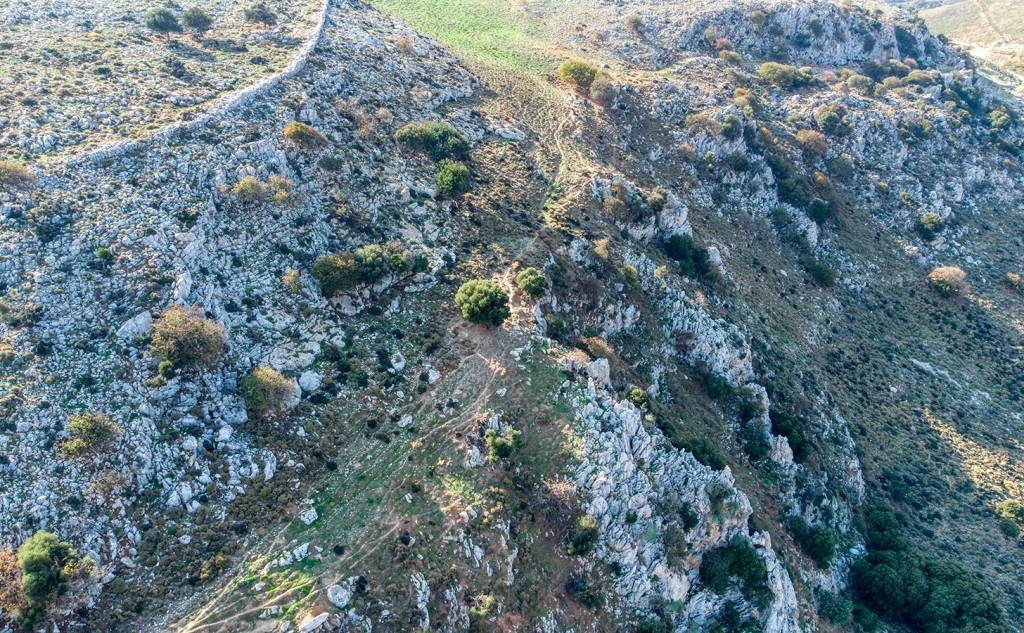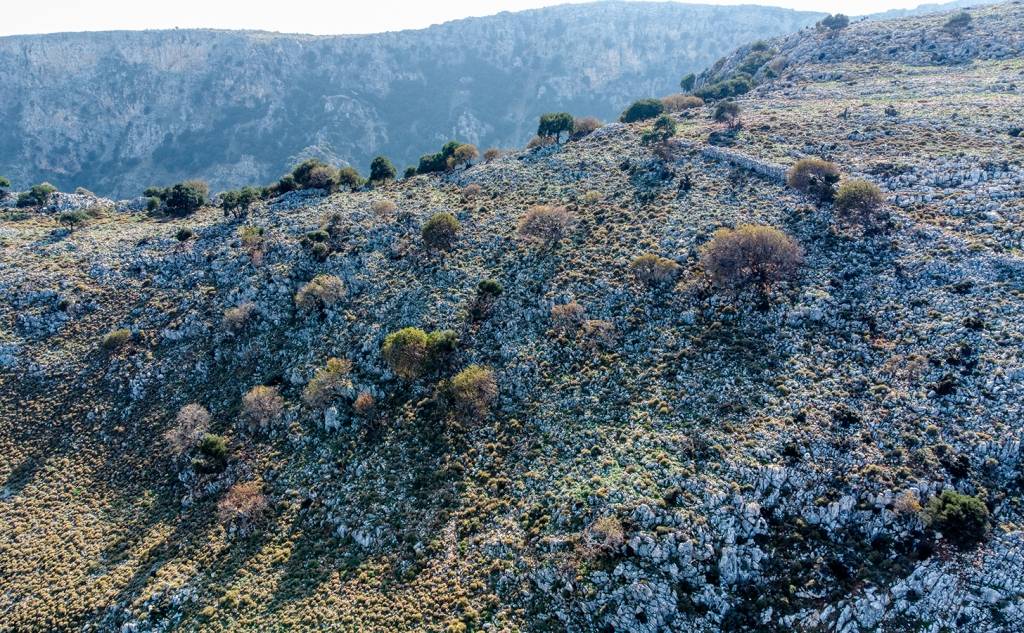Acropolis of Kastrokefala
In Ellinoperamata (or Linoperamata), at a breathing distance from the sea, the hill of Kastrokefala rises. It is located at an altitude of 355 metres and has the impressive shape of a pyramid, while on the south side, it is cut short by a huge cliff, the famous Almyros Gorge.
The Mycenaean settlement, a typical settlement of the "Dark" years of Crete (1200-1000 BC), is built at the highest point of Kastrokefala hill. The settlement, which has not yet been excavated in its entirety, includes the citadel (built on the edge of the cliff), two flat sections (used for houses), as well as a cyclopean wall (480 metres long and 4 metres high), indicating the fortification character of the site. The total area of the acropolis is estimated at 40 acres and seems to be the largest Mycenaean acropolis of Crete.
The acropolis became famous with the study of E. Platakis published in the "Cretan Chronicles" of 1970, while Stylianos Alexiou carried out the excavations in the 1970s. The excavations continued again in 2006-2007 and 2011-2012.
The remains of a building (Building I), the use of which was mainly culinary, are at the top of the citadel. Here, a series of Mycenaean-type hobs lined with clay was discovered, on which cooking utensils were found. Also, the presence of a foreign element, which may have participated in the construction of the citadel, is probable from the discovery of an Italian type of copper razor (a rare object for the Aegean), along with a type of Naue II sword. Finally, the mugs and goblets stand out from the pottery findings. At the same time, the presence of decorated craters shows that the custom of ritual wine drinking with a mixture of wine and water in elaborate utensils (perhaps of Mycenaean inspiration) was widespread in the citadel.



